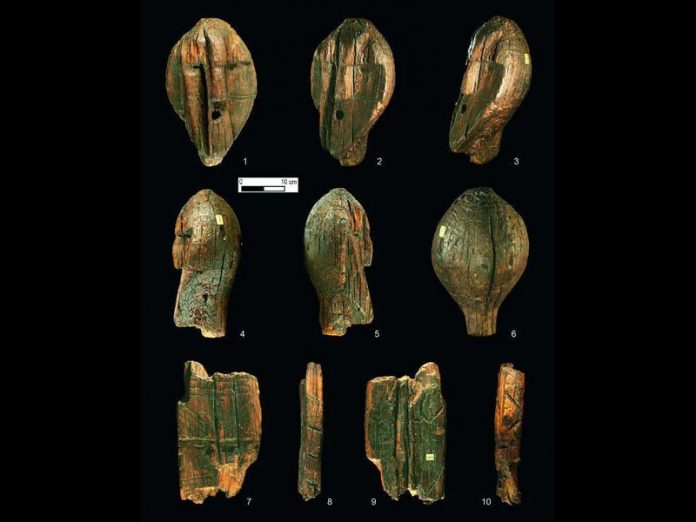New study suggests that famous Shigir Idol is much older than previously thought.
Archaeologists seem to be in constant debate about the timeline for ancient art. Just earlier this week, we reported on a study that challenged the idea that some of the world’s oldest recorded markings held symbolic artistic meaning.
Now, a seemingly unspectacular wooden figure is being reconsidered as one of the oldest examples of monumental art.
As Andrew Curry reports for Science, researchers have reason to believe that a carved wooden statue standing more than 16 feet tall, originally unearthed in Russia in 1894, was likely made from a single larch tree log about 11,600 years ago.
That’s according to a new study, published in the journal Antiquity, where an international team including researchers from the Russian Academy of Sciences and the University of Göttingen used new analytical techniques to more precisely calculate the estimated age of the statue, known as the Shigir Idol.
Previously, the statue — a smoothed plank figure covered in line markings, with a recognizable human-shaped heads and hands — wasn’t considered all that interesting. It was first discovered in 1894 near the city of Yekaterinburg by gold prospectors. It was assumed to be only a few thousand years old, and for more than a century, it sat on display at a Russian museum.
As Curry reports, while the first radiocarbon analysis of the statue took place in the 1990s and dated the piece as 9,800 years old, the number proved controversial because scholars posited that hunter-gatherers couldn’t have made such a large sculpture with complex markings. Then the team of researchers who published this latest study took samples from the core of the idol in 2014, and that sample pushed the original date of the piece back even further.
While some parts of the idol have been lost, Yasmin Tayag reports for Inverse that a diagram of the statue from 1914 showed it appeared to be fashioned with five human-like faces. But, in fact, there were even more. As scientists later revealed in 2003 and in 2014, the wooden figure was carved with eight faces.
The new research suggests the idol dates back to the early Holocene after the last glacial maximum. This suggests that these hunter-gatherers were capable of large-scale, complex ritualistic art, co-author of the study, archaeologist Thomas Terberger tell Curry.
It’s still unclear what the markings mean, if anything at all. Experts were debating the meaning of the markings on the Shigir Idol at a conference in Yekaterinburg just last year, comparing them to other similar symbols.
The art of the Göbekli Tepe, whose ruins are in present-day Turkey — more than 1,550 miles away — seems to share the most similarities to the statute in age and appearance.
Researchers are still uncovering more information about Shigir Idol and the site where it was found. According to Curry, archaeologist Mikhail Zhilin of the Russian Academy of Sciences, the lead author on the study, has found other artifacts near the site in more recent digs.
These findings include hundreds of small bone points and daggers from the same time period, elk antlers caved with animal faces and even woodworking tools that continue to suggest just how advanced these hunter-gathers really were.















